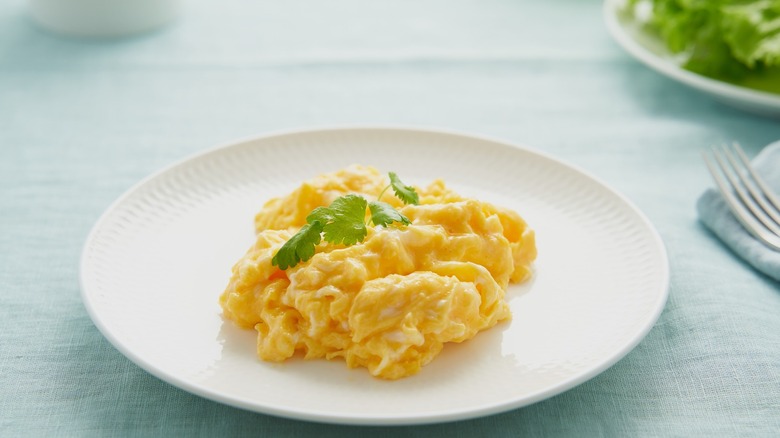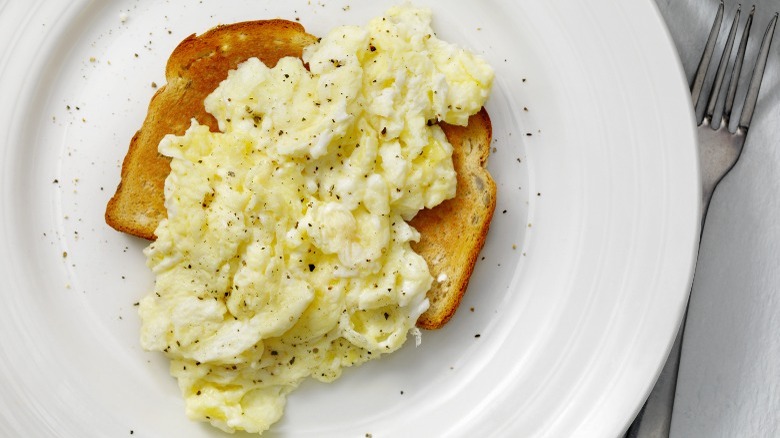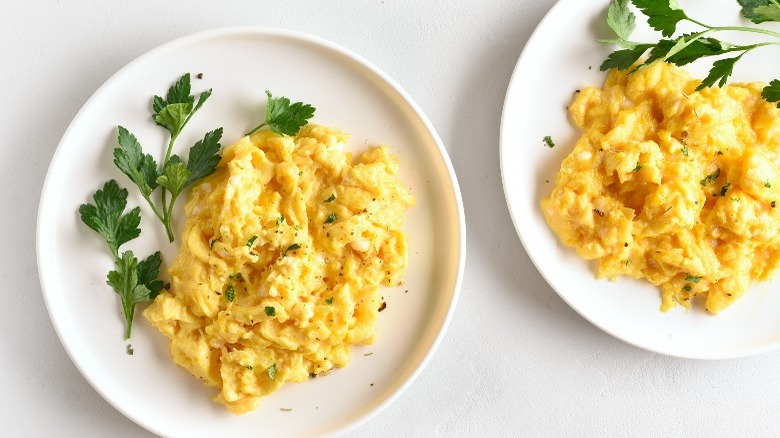The Cream Technique That Saves Eggs From Overcooking
For all their popularity and ubiquitousness around the world, scrambled eggs are deceptively easy to mess up. Ideally, a dish of scrambled eggs will be light and fluffy without being either too runny or too tough, but that balance can be difficult to achieve without proper practice and discipline. An old French technique, however, may be the key to saving your eggs from turning into a thick, burnt mess. It turns out that adding cold cream not just before cooking, but also afterward, can make the difference between a crusty pile and a creamy pillow of eggs.
Scrambling can be a finicky affair because of the dish's sensitivity to temperature changes. The heat from a stovetop causes liquidy eggs to curdle when the protein molecules inside start to move at a faster rate and ram into each other. Once they coagulate through the process of frying, boiling, or, yes, scrambling, they finally become edible. Cooking eggs for too long, however, can turn them into a dry and unpleasantly rubbery yolk because there's no more room for moisture.
The miracle of cold cream
Egg whites start to settle at a slightly lower temperature than the yolks do. This makes the process of finding the sweet spot for scrambled eggs, which are a mixture of the two types of proteins, a bit of a challenge. To make matters even trickier, the time window in between solidifying and overhardening is narrow, so it's important to be vigilant when observing your eggs and take action as soon as you see them start to curdle. A splash of chilled cream is just the ingredient that you may need to regulate this rapid change in temperature.
The chilled temperature of the cream is important because it actively works to slow down the heating of the eggs, which continue to cook even as they make their journey to the plate. Cold milk or sour cream work in this method, too, as does a bit of chilled and beaten raw egg left over from the initial whisking.
Other helpful tips for making scrambled eggs
Keep in mind that the art of making scrambled eggs is oft-debated and that there are other methods to consider while preparing your breakfast dish, like how much to stir once they're in the pan or how much to pre-season them. Cooking eggs low and slow is a great way to avoid overcooking them, and always remember to remove the eggs from the stove just before they're finished cooking. Due to the proteins' sensitivity, the scrambled dish is bound to cook a little on the serving plate while they're still hot.
Adding milk or cream to a bowl of pre-cooked egg batter is common practice, but even this is a point of controversy. While the traditional method is adding milk to help to fluff up the eggs, professional chef sources say otherwise. Milk actually helps to overcook and dry out a batch of eggs, making the scrambled batter thinner instead of adding the desired creamy oomph. Instead, a bit of melted butter works much better to stop the eggs from coagulating into a chewy brick. Most importantly, you should save pouring in milk, cream, or any other sort of dairy until after the eggs have met the stovetop.



